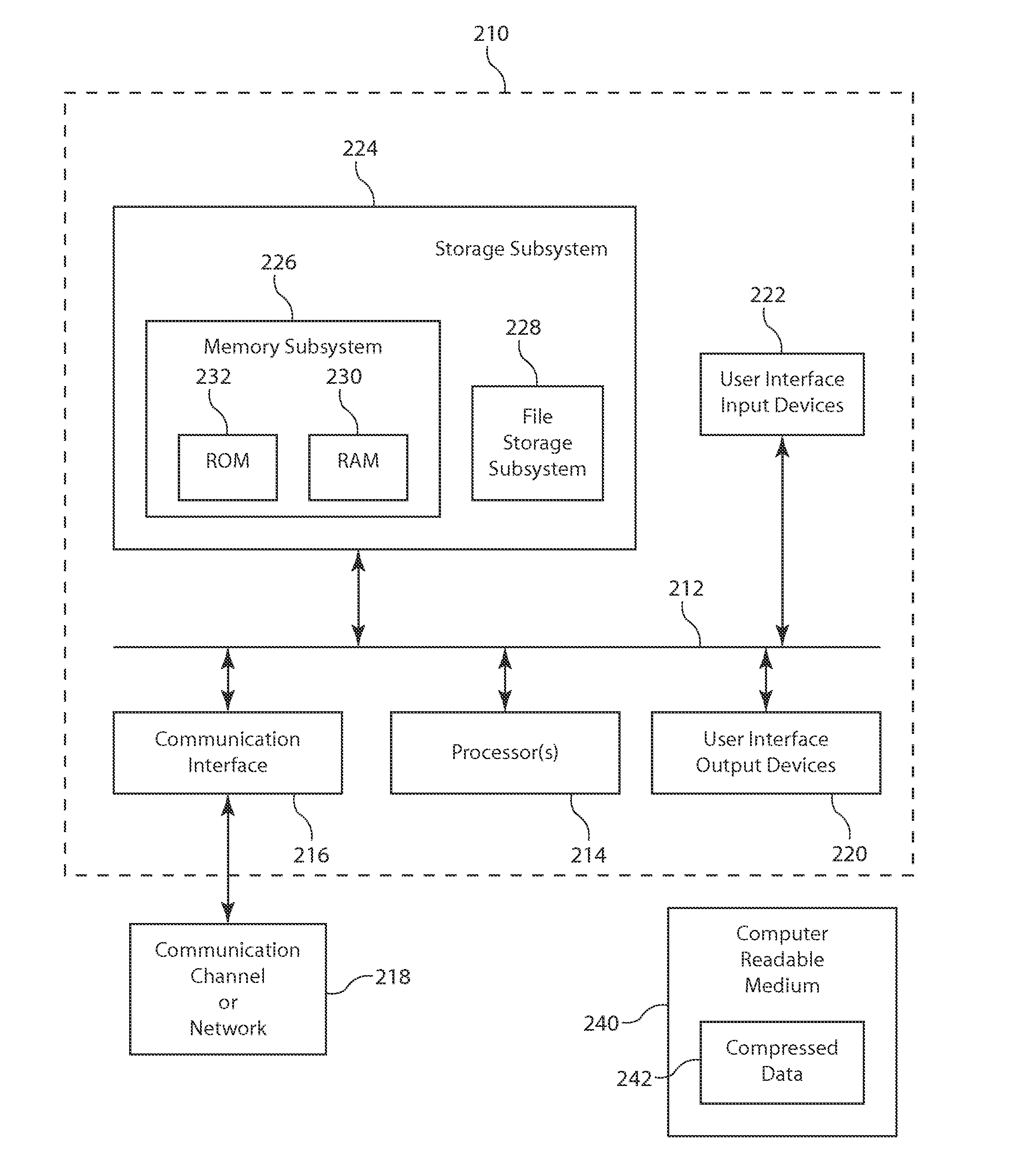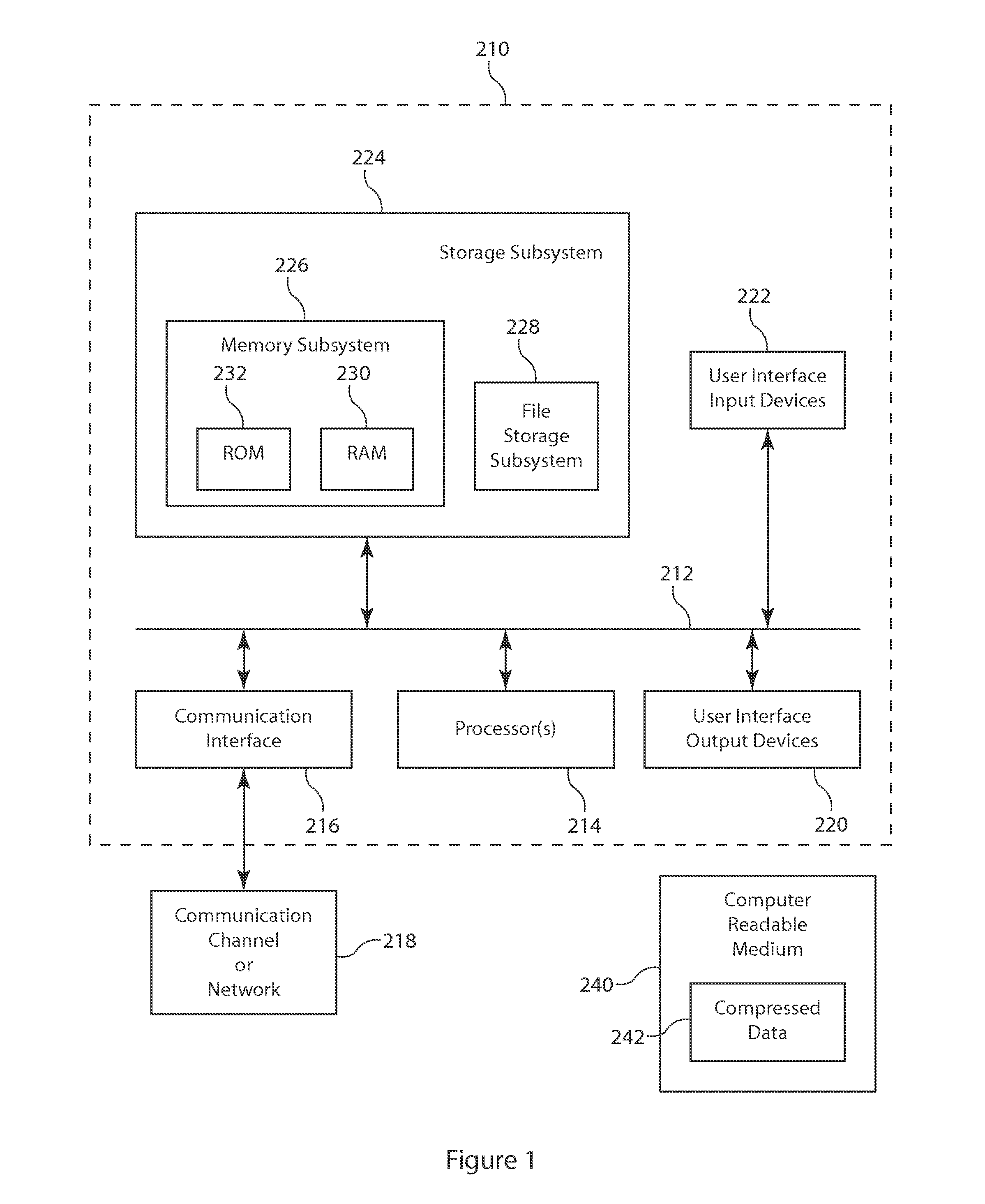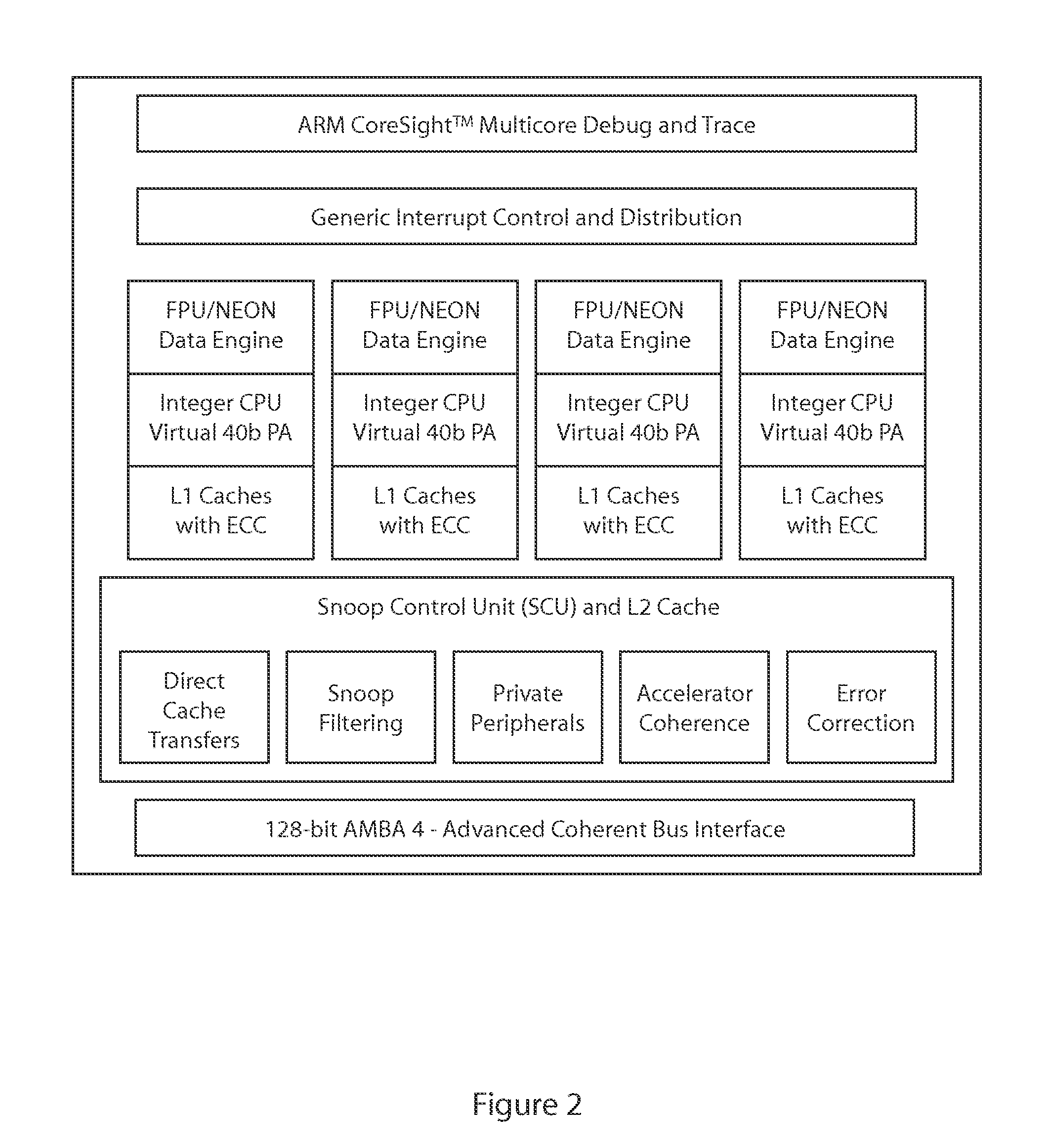Data compression for direct memory access transfers
a direct memory and data compression technology, applied in the field of computer system operation, can solve the problems of limiting the efficiency and speed with which a given program can be executed, memory management interferes with users' ability to individually perform, and system performance bottlenecks, so as to achieve the effect of less impact on access
- Summary
- Abstract
- Description
- Claims
- Application Information
AI Technical Summary
Benefits of technology
Problems solved by technology
Method used
Image
Examples
first embodiment
[0158]The float to integer format converter, in accordance with a The input floating-point data are represented in NB bits per sample. The number of bits per integer sample at the output is Nbits. The maximum floating-point value for a set of input floating-point samples, f_max, is determined and the scale factor F_SCALE is calculated as follows,
F_SCALE=[2(Nbits−1)−1] / f_max
[0159]Each floating-point number in the set is multiplied by F_SCALE to form a scaled floating-point number. Logic to round each scaled floating-point number provides the output integer number. The integer number is represented in a binary two's-complement format having Nbit bits. The two's-complement integer format is used for illustrative purposes. The particular integer format does not limit the scope of the invention, as the floating-point data may be converted to other integer formats.
second embodiment
[0160]the float to integer format converter separately processes the sign bit, exponent bits and mantissa bits to produce an integer in two's-complement format. For IEEE 754 single precision format, the mantissa has NM=23 bits and the exponent has NE=8 bits. For IEEE 754 double precision format, the mantissa has NM=32 bits and the exponent has NE=11 bits. The “hidden bit” is set to “1” for the integer mantissa. The hidden bit corresponds to the leading one of the integer mantissa. The resulting mantissa may provide a positive mantissa, “pos_mant”. In two's-complement format, a negative number may be represented by inverting the bits of the positive mantissa and adding “1”. Inverting the bits of the positive mantissa and adding “1” to the inverted bits provides a negative mantissa, “neg_mant”. The sign value, pos_mant and neg_mant are provided to a selector that selects pos_mant if the sign value is “0” or neg_mant if the sign value is “1”. The selected mantissa is right-shifted base...
PUM
 Login to View More
Login to View More Abstract
Description
Claims
Application Information
 Login to View More
Login to View More - R&D
- Intellectual Property
- Life Sciences
- Materials
- Tech Scout
- Unparalleled Data Quality
- Higher Quality Content
- 60% Fewer Hallucinations
Browse by: Latest US Patents, China's latest patents, Technical Efficacy Thesaurus, Application Domain, Technology Topic, Popular Technical Reports.
© 2025 PatSnap. All rights reserved.Legal|Privacy policy|Modern Slavery Act Transparency Statement|Sitemap|About US| Contact US: help@patsnap.com



